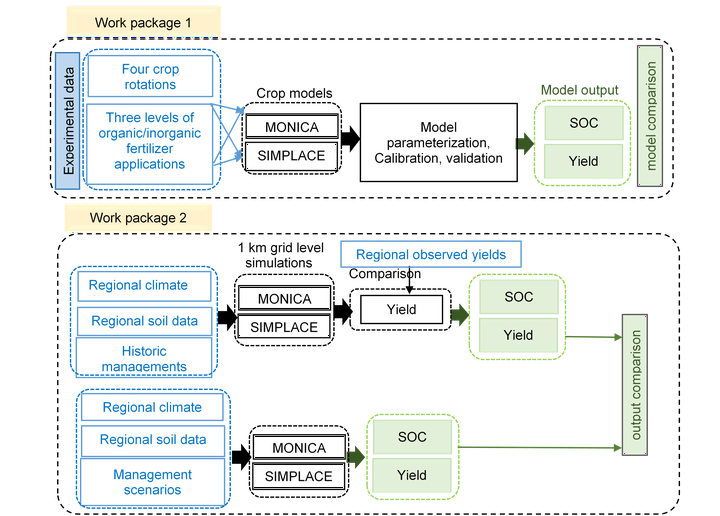Spatially-explicit crop modelling to understand the potential of different agricultural managements to improve carbon sequestration and crop yield
Soil organic carbon (SOC) is one of the most important indicator to represent soil quality and productivity. It is the largest pool of carbon store which is about 2.5 times larger than atmospheric carbon stock. Nearly 12% of global SOC stock contains in the agricultural soil. Considering the fact that about 35% of land surface occupied with agricultural soils, carbon-sequestration through agriculture soil management serves as an efficient approach for sustainable planning of natural resources under future scenarios of climate change. The process of Carbon sequestration in agricultural soils is complex and depends on factors like soil properties, agricultural management practices, and climatic variables. Understanding the long-term impact of these inter-related factors at regional scales using field measurements is costly and in most cases even impossible due to highly variable dynamic of weather conditions, soil heterogeneity, and slow change in carbon cycle. Crop models are therefore used to link among spatial datasets of soils, climate, and management practices and also to estimate the future impacts of climate change and management strategies on C-sequestration at regional level. Here, we propose exploring the individual and combined effects of three types of agricultural management practices at regional scale:
- crop residual management,
- combinations of organic and inorganic fertilizer applications,
- crop rotations on SOC and wheat yields We assess the effects of these practices for 20-years during historical period. To capture the spatiotemporal dynamic, we deploy two biophysical crop models to scale up the analysis from the controlled experimental conditions to regional level. The data for experimental condition analyses have been already obtained from an on-going research project between the principle investigator (Dr. Kamali from Germany) and the cooperating partner (Prof. Ayeneband from Iran). For the regional analysis, we consider the Khuzestan province of Iran as a case study with heterogeneous soil properties and variable dynamics for climate conditions.
Partners
- Prof. Dr. Amir Aynehband, Shahid Chamran University of Ahvaz, Department of Production Engineering and Plant Genetics
Funded by
German Research Foundation (DFG)
